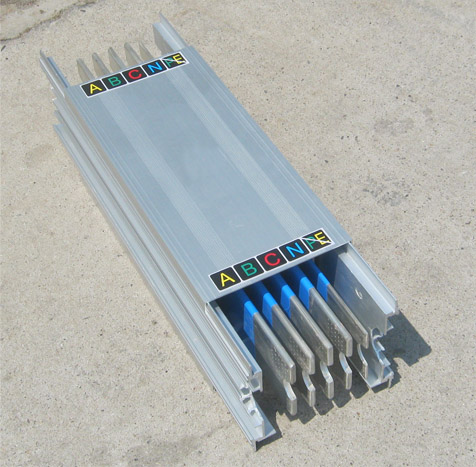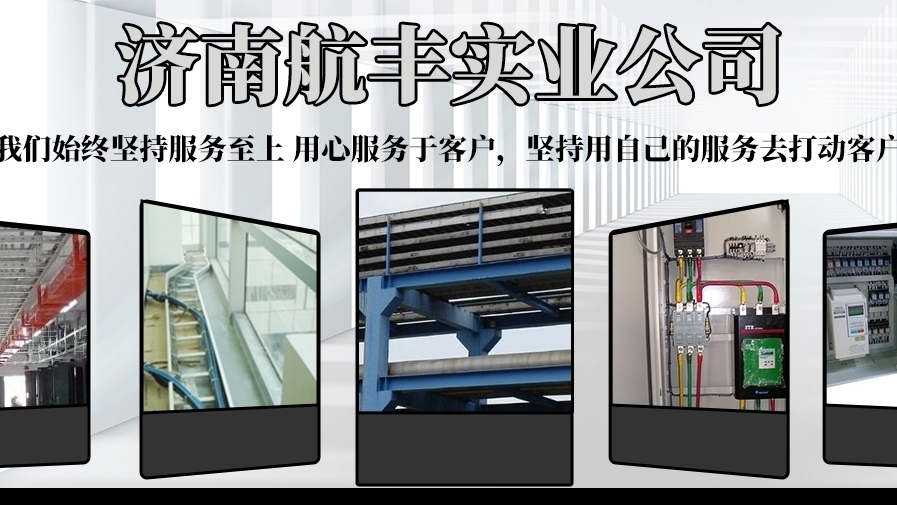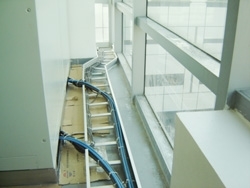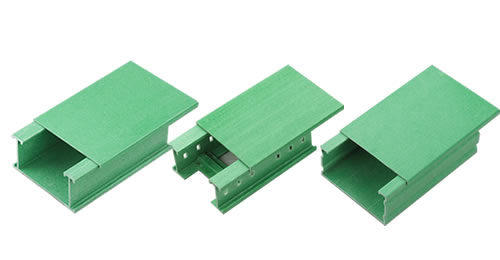山东电缆桥架:电力电缆常识性知识和电缆试验方法介绍
结合行业规范(GB/T 12706、IEC 60502等)及动态内容,电力电缆相关知识解析如下:
Based on industry standards (GB/T 12706, IEC 60502, etc.) and the latest technological developments, the analysis of knowledge related to power cables is as follows:
一、电力电缆基础1.电缆与架空线对比电力线路按结构分为架空线路和电缆线路两种,架空线路的导线通过大气、绝缘子实现电气绝缘隔离,大地为地电极。电缆线路的导线通过绝缘材料隔离后被封闭在接地的金属屏蔽内部。特性架空线路电缆线路绝缘介质大气+绝缘子固态绝缘材料屏蔽方式无屏蔽,大地作地电极金属屏蔽层接地敷设环境暴露于大气埋地/管廊/隧道电压等级全范围(220V~1000kV)中高压为主(1kV~500kV)补充说明:电缆的金属屏蔽层兼具电场均化与短路电流通道功能,是保障的核心设计。
1、 Power cable foundation 1. Comparison between cables and overhead lines Power lines are divided into two types according to their structure: overhead lines and cable lines. The wires of overhead lines are electrically insulated and isolated through the atmosphere and insulators, and the earth is the ground electrode. The wires of the cable line are isolated by insulation material and enclosed inside a grounded metal shield. Characteristics: Overhead power lines, cable lines, insulation media, atmosphere+insulator, solid insulation material, shielding method, unshielded, earth electrode, metal shielding layer, grounding, laying environment exposed to atmosphere, buried/pipe gallery/tunnel voltage level, full range (220V~1000kV), mainly medium high voltage (1kV~500kV). Additional explanation: The metal shielding layer of the cable has both electric field homogenization and short-circuit current channel functions, which is the core design to ensure safety.
2.电压等级与标识我国电压等级划分为:220/380V、3kV、6kV、10kV、35kV、110kV、220kV、330kV、500kV、750kV、1000kV等,并划分为输电电压与配电电压两类。
2. Voltage levels and identification: China's voltage levels are divided into two categories: 220/380V, 3kV, 6kV, 10kV, 35kV, 110kV, 220kV, 330kV, 500kV, 750kV, 1000kV, etc., and are divided into transmission voltage and distribution voltage. ? ??
我国电缆产品的电压等级包括:0.6/1、1/1、3.6/6、6/6、6/10、8.7/10、8.7/15、12/15、12/20、18/20、18/30、21/35、26/35、36/63、48/63、64/110、127/220、190/330、290/500kV共19种。标准电压(U?/U):U,导体对地额定电压(如10kV系统U?=8.7kV);U,系统线电压(如10kV)。电缆额定电压(U0/U)的选定是由系统的不同接地方式决定的,接地方式影响:接地类型适用U?/U特点直接接地64/110kV及以上单相短路电流大小电阻接地12/20kV~48/63kV限制过电压消弧线圈接地3.6/6kV~18/30kV补偿电容电流不接地≤8.7/10kV短时允许带故障运行3.导体规格电缆导体截面积有:1.5、2.5、4、6、10、16、25、35、50、70、95、120、150、185、240、300、400、500、630、800、1000、1200、1400、1600、1800、2000、2500mm2,共27种。
The voltage levels of cable products in China include: 0.6/1, 1/1, 3.6/6, 6/6, 6/10, 8.7/10, 8.7/15, 12/15, 12/20, 18/20, 18/30, 21/35, 26/35, 36/63, 48/63, 64/110, 127/220, 190/330, and 290/500kV, totaling 19 types. Standard voltage (U ?/U): U, rated voltage of the conductor to ground (such as U ?=8.7kV for a 10kV system); U, System line voltage (such as 10kV). The selection of cable rated voltage (U0/U) is determined by different grounding methods of the system, and the grounding method affects: the grounding type is suitable for U ?/U characteristics, directly grounded 64/110kV and above single-phase short-circuit current size, resistance grounded 12/20kV~48/63kV, overvoltage arc suppression coil grounded 3.6/6kV~18/30kV, compensation capacitor current not grounded ≤ 8.7/10kV, short-term fault operation is allowed. 3. Conductor specifications: Cable conductor cross-sectional area includes: 1.5, 2.5, 4, 6, 10, 16, 25, 35, 50, 70, 95, 120, 150, 185, 240, 300, 400, 500, 630, 800, 1000, 1200, 1400, 1600, 1800. There are a total of 27 types, including 2000 and 2500mm2.
截面积分级常用范围35~240mm?(占90%用量),大电流应用≥1000mm?需采用分割导体结构减少集肤效应。绞合结构,如下:二、电缆结构深度解析1.分层功能与材料电缆的基本结构,主要包括如下:结构层功能关键材料技术要点导体层传输电能退火铜/铝紧压系数≥0.9绝缘层电气隔离XLPE/EPR/油浸纸厚度∝U?等级屏蔽层电场均化半导电交联料界面光滑度≤5μm护套层机械防护PE/PVC/无卤阻燃料阻燃等级IEC 60332?电缆导体芯数有:单芯、两芯、三芯、四芯、五芯,计5种。单芯和三芯电缆基本结构,图示如下:
The commonly used range for cross-sectional area classification is 35-240mm ? (accounting for 90% of usage), and for high current applications ≥ 1000mm ?, a segmented conductor structure should be used to reduce skin effect. Twisted structure, as follows: 2. Deep analysis of cable structure: 1. Layered function and material. The basic structure of the cable mainly includes the following: structural layer, functional key materials, technical points, conductor layer, transmission of electrical energy, annealing, copper/aluminum compression coefficient ≥ 0.9, insulation layer, electrical isolation, XLPE/EPR/oil immersed paper thickness ∝ U ? level, shielding layer, electric field homogenization, semiconductive cross-linking material, interface smoothness ≤ 5 μ m, sheath layer, mechanical protection, PE/PVC/halogen-free flame retardant grade, IEC 60332. The number of cable conductors includes: single core, two core, three core, four core, five core, totaling five types. The basic structure of single core and three core cables is shown in the diagram below:
2.绝缘材料电缆绝缘层的作用是,将线芯与大地以及不同相的线芯间在电气上彼此隔离,从而保证电能输送。从1kV到500 kV的各种电力电缆中,交联聚乙烯是当前应用广的一种绝缘材料,电缆主要绝缘介质的型式结构:橡胶绝缘乙丙橡胶电缆使用电压已达150kV。聚氯乙烯绝缘介损大,含氯,运行温度低,一般只用于6kv及以下电压等级,将被淘汰。聚乙烯绝缘熔融温度低(70℃),工作电压达500kV。交联聚乙烯通过化学或物理方法将聚乙烯分子链间相互交联。运行温度可达90℃,短路时导电线芯允许的温度可达250℃。极大地提高了电缆的载流量和短路容量。其工作电压达500kV。?电缆绝缘层的厚度大小,主要与电缆电压U0的等级有关,详见下图:3.电缆保护层电缆保护层的质量好坏,对电缆的使用寿命有很大影响。保护层按加强层、铠装层和外被层结构顺序,以两个阿拉伯数字表示,每一个数字表示所采用的主要材料。内护层更是重要的保护,其代号如下表:
2. The function of the insulation layer of the insulation material cable is to electrically isolate the wire core from the ground and the wire cores of different phases, thereby ensuring the transmission of electrical energy. Among various power cables ranging from 1kV to 500 kV, cross-linked polyethylene is currently the most widely used insulation material. The main insulation medium structure of the cable is rubber insulated ethylene propylene rubber cable, with a maximum operating voltage of 150kV. Polyvinyl chloride insulation has high dielectric loss, chlorine content, low operating temperature, and is generally only used for voltage levels of 6kV and below, and will be phased out. Polyethylene insulation has a low melting temperature (70 ℃) and a maximum operating voltage of 500kV. Cross linked polyethylene is crosslinked between polyethylene molecular chains through chemical or physical methods. The maximum operating temperature can reach 90 ℃, and the maximum temperature allowed for the conductive core during short circuit can reach 250 ℃. Greatly improves the safety current carrying capacity and short-circuit capacity of the cable. Its maximum working voltage reaches 500kV. The thickness of the cable insulation layer is mainly related to the level of cable voltage U0, as shown in the following figure: 3. The quality of the cable protection layer has a great impact on the service life of the cable. The protective layer is represented by two Arabic numerals in the order of reinforcement layer, armor layer, and outer layer structure, with each numeral indicating the main material used. The inner protective layer is even more important for protection, and its code is shown in the following table:
4.屏蔽层电缆屏蔽层,实质上是一种改善电场分布的措施。没有金属护套的挤包绝缘电缆,除半导电屏蔽层外,还要增加用铜带或铜丝绕包的金属屏蔽层,这个金属屏蔽层的作用,在正常运行时通过电容电流;当系统发生短路时,作为短路电流的通道,同时也起到屏蔽电场的作用。三层共挤工艺:导体屏蔽+绝缘+绝缘屏蔽同步挤出,界面缺陷。金属屏蔽类型:铜带绕包厚度≥0.1mm铜丝编织截面≥25mm?(满足短路热稳定)三、电缆附件技术电缆附件,主要包括终端头与中间接头。终端头是将电缆与其他电气设备连接的部件;中间接头是将两根电缆连接起来的部件。良好的电缆附件,线芯连接主要是联接电阻小而且联接稳定,能经受起故障电流的冲击;长期运行后其接触电阻不应大于电缆线芯本体同长度电阻的1.2倍。电缆附件的绝缘性能应不低于电缆本体,所用绝缘材料的介质损耗要低。电缆附件的种类繁多,具有不同类型的特点及局限性,一般不能相互取代。
4. The shielding layer of a cable is essentially a measure to improve the distribution of electric fields. For extruded insulated cables without a metal sheath, in addition to the non-conductive shielding layer, a metal shielding layer wrapped with copper tape or wire should be added. The function of this metal shielding layer is to pass capacitive current during normal operation; When a short circuit occurs in the system, it serves as a channel for short-circuit current and also shields the electric field. Three layer co extrusion process: simultaneous extrusion of conductor shielding, insulation, and insulation shielding to eliminate interface defects. Metal shielding type: Copper tape wrapping thickness ≥ 0.1mm, copper wire weaving cross-section ≥ 25mm ? (meeting short-circuit thermal stability). 3. Cable accessory technology: Cable accessories, mainly including terminal heads and intermediate joints. Terminal head is a component that connects cables with other electrical equipment; The intermediate joint is a component that connects two cables together. A good cable accessory, the core connection is mainly characterized by low connection resistance and stable connection, which can withstand the impact of fault current; After long-term operation, its contact resistance should not exceed 1.2 times the resistance of the same length of the cable core body. The insulation performance of cable accessories should not be lower than that of the cable body, and the dielectric loss of the insulation material used should be low. There are various types of cable accessories with different characteristics and limitations, and they generally cannot be replaced by each other.
2.高压终端解析?瓷套式户外电缆终端主要由接线柱、应力锥、应力锥罩、瓷套和尾管等零件组成,应力锥采用橡胶材料橡胶注橡成型,瓷套采用高强度、大小伞裙结构,外形呈锥形,具有很好的防污闪特性。内部采用弹簧锥托定位结构,使应力锥和硅油隔离开,克服了应力锥由于材料老化带来的弹性松弛、应力锥与电缆外半导电层接触不良等弊病,提高了应力锥寿命。?复合管套式户外电缆终端外绝缘由环氧玻璃纤维管及硅橡胶雨裙组成的复合套管,内部结构与瓷套式终端相近,具有瓷套式终端的全部优点,同时具有优良的防爆性能,重量轻,便于装卸运输,极利于安装操作。
2. Analysis of High Voltage Terminals ? Ceramic sleeve outdoor cable terminals are mainly composed of terminal posts, stress cones, stress cone covers, ceramic sleeves, and tailpipes. The stress cones are made of rubber material and molded by rubber injection molding, while the ceramic sleeves are made of high-strength, large-sized umbrella skirts with a conical shape and excellent anti pollution flashover characteristics. The internal use of a spring cone support positioning structure separates the stress cone from the silicone oil, overcoming the drawbacks of elastic relaxation caused by material aging and poor contact between the stress cone and the outer semiconductive layer of the cable, and improving the service life of the stress cone. The external insulation of the composite sleeve outdoor cable terminal is composed of epoxy glass fiber tube and silicone rubber rain skirt composite sleeve. The internal structure is similar to that of the porcelain sleeve terminal, and it has all the advantages of the porcelain sleeve terminal. At the same time, it has excellent explosion-proof performance, light weight, easy loading and unloading transportation, and is extremely conducive to installation and operation.
?GIS电缆终端分插拔式与装配式,两者在顶部密封处理与尾管结构有所不同,其他主要结构一致;由于GIS是在全封闭的环境下运行,可以免受大气条件与污秽的影响,加上SF6气体的良好绝缘特性,所以GIS的外绝缘采用环氧树脂套管,内绝缘采用应力锥加弹簧锥托顶紧结构,且为全干式,无需加任何绝缘浇注剂,杜绝了运行中漏油现象。?整体预制式电缆终端(柔性干式户外终端)在工厂整体预制成型,内部复合了半导电硅橡胶应力锥,与瓷套式、复合套管式相比,结构大大简化,安装时只需按要求处理好电缆本体后,将终端主体套入电缆端头位置即可,安装极为方便,可倾斜安装在架空线塔上,且具有无油、防爆、重量轻等特点。?高压电缆绝缘接头与直通接头插入式装配型绝缘接头,接头主体主绝缘为高性能绝缘树脂,采用真空浇注成型工艺与金属保护壳成型为一个整体,连接金具为插拔式免模压结构,安装极为方便。?高压电缆分支接头整体插拔式高压分支接头,分支主体是由热固性树脂或绝缘橡胶真空注射而成的一整体实心模件,无需添加绝缘浇注剂或绝缘气体,主体外壳为金属构件,防水,防潮,耐机械应力,安装为全插拔式,直接将各相电缆插入分支主体即可,可埋于地下,也可安装在电缆沟或电缆井内。
GIS cable terminals are divided into plug-in and assembled types, with differences in top sealing treatment and tailpipe structure, while other main structures are the same; Due to the fact that GIS operates in a fully enclosed environment, it can be protected from atmospheric conditions and pollution. In addition, SF6 gas has good insulation properties. Therefore, the external insulation of GIS adopts epoxy resin sleeves, and the internal insulation adopts a stress cone and spring cone support structure, which is fully dry and does not require any insulation casting agent, eliminating oil leakage during operation. ? The overall prefabricated cable terminal (flexible dry-type outdoor terminal) is prefabricated and formed in the factory as a whole, with a semi conductive silicone rubber stress cone composite inside. Compared with the porcelain sleeve type and composite sleeve type, the structure is greatly simplified. When installing, only the cable body needs to be processed according to the requirements, and the terminal body can be inserted into the cable end position. The installation is extremely convenient, and it can be installed at an angle on the overhead line tower, and has the characteristics of oil-free, explosion-proof, and lightweight. High voltage cable insulation joints and straight through joints are plug-in assembly type insulation joints. The main insulation of the joint body is high-performance insulation resin, which is formed by vacuum casting technology and metal protective shell as a whole. The connecting fittings are plug-in and non molded structures, making installation extremely convenient. High voltage cable branch joint integral plug-in type high voltage branch joint, the branch body is a solid module made of thermosetting resin or insulating rubber vacuum injection, without the need to add insulation casting agent or insulation gas. The main body shell is a metal component, waterproof, moisture-proof, and resistant to mechanical stress. It is installed as a fully plug-in type, and the cables of each phase can be directly inserted into the branch body. It can be buried underground or installed in cable trenches or cable wells.
四、电缆试验技术1.试验分类标准试验类型执行主体依据标准核心项目例行试验制造厂GB/T 3048局部放电、耐压交接试验安装单位DL/T 596交流耐压、护层测试状态检修试验运维单位Q/GDW 11316红外测温、介质损耗2.关键试验方法局部放电检测脉冲电流法,灵敏度0.1pC。高频CT法,抗干扰能力强。护层故障定位跨步电压法,定位精度±0.5m。电流脉冲法,适用长距离电缆。警示:XLPE电缆禁用直流耐压,残余电荷可导致运行击穿(CIGRE 21-03报告证实)。
4、 Cable testing technology 1. Test classification standard Test type Execution subject according to standard Core project Routine test Manufacturing plant GB/T 3048 Partial discharge, withstand voltage handover test Installation unit DL/T 596 AC withstand voltage, protective layer test status Maintenance test Operation and maintenance unit Q/GDW 11316 Infrared temperature measurement, dielectric loss 2. Key test method Partial discharge detection Pulse current method, sensitivity 0.1pC. High frequency CT method, strong anti-interference ability. Step voltage method for fault location of protective layer, with a positioning accuracy of ± 0.5m. Current pulse method, suitable for long-distance cables. Warning: XLPE cables are prohibited from DC withstand voltage, as residual charges can cause operational breakdown (confirmed by CIGRE 21-03 report).
3.电缆试验方法介绍
3. Introduction to Cable Testing Methods
(1)绝缘电阻试验在进行电缆的绝缘电阻测量时需要对电缆的外皮以及芯线之间或者外皮之间或芯线之间的绝缘电阻进行测量。测量绝缘电阻的基本原理和普通电阻的测量相似,也是在试品的两端加上一个较为稳定的直流电压,然后通过测量仪器将试品过的电流大小和时间的关系表示出来,从而经过换算可以得到电缆试样的绝缘电阻随时间变化的曲线,在曲线上可以得出某个特定时间的绝缘电阻值。对于容量比较大的电缆来说,通常情况下吸收比的概念更能说明问题,因此用它来代替绝缘电阻测量的结果。在工程实际测量之中,通常用兆欧表作为测量设备。?主绝缘绝缘电阻测量:?主绝缘绝缘电阻值参考标准:?外护套绝缘电阻测量:试验目的是检测电缆在救设后或运行中外护套是否损伤或受潮。外护套破损的原因有:敷设过程中受拉力过大或弯曲过度;敷设或运行中由于施工和交通运输等直接外力作用;终端/中间接头受内部应力、自然拉力、电动力作用;白蚁吞噬、化学物质腐蚀等。测量方法:三芯电缆三相共用外护套,只进行一次测量;单芯电缆分别在每一相测量,非被试相及金属线芯(导体)接地。采用500V兆欧表,大容量数字兆欧表(如:短路电流>3mA)GB50150-2006、Q/CSG10007-2004要求外护套绝缘电阻值不低于0.5M/km。注意问题:兆欧表“L”端引线和“E”端引线应具有可靠的绝缘。测量前后均应对电缆金属护层充分放电,时间约2-3分钟。若用手摇式兆欧表,未断开高压引线前,不得停止摇动手柄。电缆不接试验设备的另一端应派人看守,不准人靠近与接触。
(1) When conducting insulation resistance tests on cables, it is necessary to measure the insulation resistance between the outer sheath and core wires, or between the outer sheath and core wires. The basic principle of measuring insulation resistance is similar to that of measuring ordinary resistance. It is to apply a relatively stable DC voltage at both ends of the test sample, and then use a measuring instrument to represent the relationship between the current flowing on the test sample and time. After conversion, the curve of the insulation resistance of the cable sample over time can be obtained, and the insulation resistance value at a specific time can be obtained on the curve. For cables with relatively large capacity, the concept of absorption ratio is usually more indicative, so it is used to replace the results of insulation resistance measurement. In practical engineering measurement, a megohmmeter is usually used as a measuring device. ? Measurement of main insulation resistance: ? Reference standard for main insulation resistance value: ? Measurement of outer sheath insulation resistance: The purpose of the test is to detect whether the outer sheath of the cable is damaged or damp after rescue or operation. The reasons for damage to the outer sheath include: excessive tension or bending during installation; Due to direct external forces such as construction and transportation during installation or operation; The terminal/intermediate joint is subjected to internal stress, natural tension, and electric force; Termite ingestion, chemical corrosion, etc. Measurement method: Three core cable with three-phase shared outer sheath, only one measurement is conducted; Single core cables are measured separately at each phase, with the non tested phase and metal core (conductor) grounded. Using a 500V megohmmeter, it is recommended to use a high-capacity digital megohmmeter (such as short-circuit current>3mA). GB50150-2006 and Q/CSG10007-2004 require the outer sheath insulation resistance value to be no less than 0.5m/km. Attention: The "L" terminal lead and "E" terminal lead of the megohmmeter should have reliable insulation. Before and after measurement, the metal protective layer of the cable should be fully discharged for about 2-3 minutes. If using a hand cranked megohmmeter, do not stop shaking the handle until the high voltage lead is disconnected. The other end of the cable that is not connected to the testing equipment should be guarded by someone, and no one is allowed to approach or come into contact with it.
(2)泄漏电流试验泄漏电流试验的基本原理是通过测量直流电压作用下电缆试品中流过的电流大小发现电缆中存在的绝缘缺陷问题。一般情况下,电缆绝缘的直流耐压试验和泄漏电流试验是同时开展的,在泄漏电流试验中需要在试品的高压侧安装适当的微安表。该试验和绝缘电阻试验的基本原理几乎完全相同,所不同的就是该试验中用高压整流装置供作为直流电源,试验中指示电流的装置是微安表。绝缘是否良好的指标是依据微安表显示的泄漏电流来反映的。
(2) The basic principle of leakage current test is to detect insulation defects in the cable by measuring the current flowing through the cable sample under the action of DC voltage. In general, the DC withstand voltage test and leakage current test of cable insulation are carried out simultaneously. In the leakage current test, an appropriate microampere meter needs to be installed on the high-voltage side of the test sample. The basic principle of this test is almost identical to that of the insulation resistance test, except that a high-voltage rectifier device is used as the DC power source in this test, and a microampere meter is used to indicate the current in the test. The indicator of good insulation is reflected by the leakage current displayed on the microampere meter.
(3)直流耐压试验直流耐压试验是传统的检测直流电缆绝缘缺陷的重要方法,其基本原理是将直流电压施加在电缆的主绝缘上,这个直流电压要求比电缆的正常工作电压高,将这个电压保持一段时间并且电压值尽量恒定,如果被试电缆试样能在这段时间经受这样高的直流电压而不出现击穿的现象,则可以判定其符合要求,这种试验能够发现绝缘严重的缺陷,从而及时采取措施而避免事故的发生。直流耐压试验电路原理接线图,如下图:交联聚乙烯绝缘电缆电性能优良,已成为纸绝缘电缆的替代品。按高压试验的通用原则,被试品上所施加的试验电压场强应模拟高压电器的运行状况。这对检验交联聚乙烯绝缘电缆效果不明显,而且还可能产生负作用。如在电缆附件内,在交流电压下,绝缘机械损伤等缺陷处易发生击穿,在直流电压下则不会。直流耐压试验模拟高压交联电缆的运行工况,其试验效果差,并且有一定的危害性。直流耐压试验不能有效地发现高压交联聚乙烯主绝缘电缆的缺陷,因此不宜用于测试;交流耐压试验是检验交联电缆绝缘质量的有效手段。准确有效的掌握电缆各部位的运行状况有利于提高电缆的运行,减少电缆在运行中的故障。
(3) DC withstand voltage test is an important traditional method for detecting insulation defects in DC cables. Its basic principle is to first apply a DC voltage to the main insulation of the cable, which is required to be higher than the normal operating voltage of the cable. The voltage should be maintained for a period of time and kept as constant as possible. If the tested cable sample can withstand such high DC voltage during this period without breakdown, it can be judged to meet the requirements. This test can detect serious insulation defects and take timely measures to avoid accidents. The schematic diagram of the DC withstand voltage test circuit is as follows: Cross linked polyethylene insulated cables have excellent electrical performance and have become a substitute for paper insulated cables. According to the general principles of high-voltage testing, the test voltage field strength applied to the test object should simulate the operating conditions of high-voltage electrical appliances. This is not very effective in testing cross-linked polyethylene insulated cables and may also have negative effects. If in cable accessories, insulation mechanical damage and other defects are most prone to breakdown under AC voltage, but not under DC voltage. The DC withstand voltage test simulates the operating conditions of high-voltage cross-linked cables, but its test effect is poor and has certain hazards. The DC withstand voltage test cannot effectively detect defects in high-voltage cross-linked polyethylene main insulated cables, so it is not suitable for testing; The AC withstand voltage test is an effective means of inspecting the insulation quality of cross-linked cables. Accurately and effectively understanding the operating conditions of various parts of the cable is beneficial for improving the safe operation of the cable and reducing cable failures during operation.
(4)交流耐压试验下图为交流耐压试验的原理图。该试验通过检测在交流高压下试品的绝缘性能发现其中存在的缺陷和问题。规定如果被试电缆能够承受工频试验电压一分钟而不发生击穿以及绝缘闪络或者其他异常问题,则可以判断该电缆绝缘良好。图中R1的作用是限制被试电缆放电时变压器的短路电流,使之低于允许值,并且高压绕组的电压梯度需低于危险值;R2的作用是限制球隙放电的电流大小;调压变压器的作用是对试验电压的幅值大小以及电压上升和下降的速度等进行调节;试验变压器的选择方面可以使用单台或者串级的试验变压器,具体依照试验具体情况而定。?主绝缘交流耐压试验典型缺陷:?
(4) The schematic diagram of the AC withstand voltage test is shown below. This experiment discovered defects and issues in the insulation performance of the test sample under high AC voltage. According to national regulations, if the tested cable can withstand the power frequency test voltage for one minute without breakdown, insulation flashover or other abnormal problems, it can be judged that the cable has good insulation. The function of R1 in the figure is to limit the short-circuit current of the transformer during the discharge of the tested cable, so that it is lower than the allowable value, and the voltage gradient of the high-voltage winding needs to be lower than the dangerous value; The function of R2 is to limit the current size of the ball gap discharge; The function of a voltage regulating transformer is to adjust the amplitude of the test voltage and the speed of voltage rise and fall; The selection of test transformers can be either single or series, depending on the specific test situation.? Typical defects of main insulation AC withstand voltage test:?
(5)介质损耗试验介质损耗角正切试验是检测绝缘缺陷的有效方法。在试验时,通过在绝缘上施加交流电压可以检测绝缘的损耗大小,如果电缆的绝缘出现老化变质或受潮等现象时,通过检测电缆电流有功分量变大的现象可以判断绝缘损耗的增大。同时,因为损耗和有功电流以及电缆绝缘的体积均有直接关系,因此不同大小的绝缘其损耗也不同,为了排除该因素的影响,在实际中一般采用另一个指标tgδ 来衡量。tgδ 的大小可以用很多种方法来进行测量,其中传统上一般采用西林电桥法即平衡测量法来检测介质损耗角正切的大小。由于技术不断发展,出现了更为方便的测量方法,例如角差法就是其中的一种,它用直接测量的方式判断电压电流之间的夹角,从而方便的得到介质损耗角正切的大小,正因为如此,角差法在当前的介质损耗角正切的试验中得到了越来越广泛的应用。
(5) Dielectric loss test and dielectric loss tangent test are effective methods for detecting insulation defects. During the experiment, the magnitude of insulation loss can be detected by applying AC voltage to the insulation. If the insulation of the cable deteriorates or becomes damp, the increase in insulation loss can be determined by detecting the increase in the active component of the cable current. At the same time, because losses are directly related to active current and the volume of cable insulation, the losses of insulation of different sizes are also different. In order to eliminate the influence of this factor, another indicator, tg δ, is generally used to measure in practice. The magnitude of TG δ can be measured in many ways, among which the traditional method is to use the Xilin bridge method, also known as the balance measurement method, to detect the magnitude of the dielectric loss tangent. Due to the continuous development of technology, more convenient measurement methods have emerged, such as the angle difference method, which uses direct measurement to determine the angle between voltage and current, thus easily obtaining the magnitude of the dielectric loss tangent. Therefore, the angle difference method has been increasingly widely used in current dielectric loss tangent experiments.
(6)局部放电试验电缆绝缘在局部放电试验可以利用局部放电时产生的一系列的电、声、光、热等现象进行检测。主要的检测内容应该包括以下几个方面:应该根据试验现象判断是否有局部放电现象的发生即定性测量;如果有局部放电的话要能检测出放电量的多少即定量测量,这是重要的环节;产生局部放电时的起始放电和熄灭的电压值必须能灵敏的进行检测;另外如果有局部放电的话应该找到放电的部位。局部放电有很多试验方法,可以从大体上将其分为电和非电的两大类,再进行精确分类的话可以分为超声波法、光侧发、RIV法、射频检测法、脉冲电流法、DGA法、介质损耗法、电气检测法等,其中电气检测法是当前应用的广泛的方法,能同时检测出是否存在局部放电以及放电的强弱。
(6) Partial discharge test: Cable insulation can be tested using a series of electrical, acoustic, optical, and thermal phenomena generated during partial discharge testing. The main detection contents should include the following aspects: firstly, the occurrence of partial discharge phenomenon should be judged based on the test phenomenon, that is, qualitative measurement; If there is partial discharge, the most important step is to be able to detect the amount of discharge and measure it quantitatively; The initial discharge and extinguishing voltage values during partial discharge must be sensitively detected; Additionally, if there is partial discharge, the location of the discharge should be identified. There are many testing methods for partial discharge, which can be roughly divided into two categories: electrical and non electrical. If accurately classified, they can be divided into ultrasonic method, optical side emission, RIV method, radio frequency detection method, pulse current method, DGA method, dielectric loss method, electrical detection method, etc. Among them, electrical detection method is currently the most widely used method, which can simultaneously detect the presence and strength of partial discharge.
(7)绝缘油试验充油电缆的电缆油是其中重要的绝缘介质,因此可以通过对油样进行预防性试验以对电缆的绝缘性能有一个大致的了解。对油样进行预防性试验时其试验内容有很多,有色谱分析、tgδ 测量、含水量测试、交流击穿强度试验等等。在进行油样试验时,要从电缆中采集油样,而这一环是整个油样测试中相当重要的环节,直接影响了后面的测试结果。在采集油样时应该本着这样一种原则,即任何时候都不能让灰尘和水分等杂质进入油样而影响试验的结果,因此在采集时需要遵守相关规定并且十分谨慎。在采集油样时应该在电缆中距离供油点较远的那一端进行采集,如果要采集的电缆段的两端均有供油,则哪一边油压较低就应在哪一段采集,采集出来的油样需要进行干燥处理并且放置于广口瓶内。
(7) The cable oil of the oil filled cable is an important insulation medium in the insulation oil test, so preventive testing of the oil sample can provide a rough understanding of the insulation performance of the cable. When conducting preventive tests on oil samples, there are many test contents, including chromatographic analysis, TG δ measurement, moisture content testing, AC breakdown strength testing, and so on. When conducting an oil sample test, the first step is to collect the oil sample from the cable, which is a crucial step in the entire oil sample testing process and directly affects the subsequent test results. When collecting oil samples, the principle should be followed that at no time should impurities such as dust and moisture enter the oil sample and affect the test results. Therefore, it is necessary to comply with relevant regulations and be very cautious when collecting. When collecting oil samples, they should be collected at the end of the cable that is farther away from the oil supply point. If both ends of the cable section to be collected have oil supply, the oil sample should be collected at the section with lower oil pressure. The collected oil sample needs to be dried and placed in a wide mouthed bottle.
(8)交叉互联系统试验有单芯电缆组成的三相输电系统中,金属护层接地方式有a两端接地、b单端接地、c交叉互联接地等3种接地方式,如下图。交叉互联性能检验交接试验采用的方式,应作为特殊试验项目。使所有互联箱连接片处于正常工作位置,在每相电缆导体中通以大约100A的三相平衡试验电流。在保持试验电流不变的情况下,测量靠近交叉互联箱处的金属套电流和对地电压。测量完后将试验电流降零,切断电源。然后将靠近的交叉互联箱内的连接片重新连接成模拟错误连接的情况,再次将试验电流升100A,并再测量该交叉互联箱处的金属套电流和对地电压。测量完后将试验电量降零,切断电源,将该交叉互联箱中的连接片复原正确的连接位置。再将试验电流升100A,测量电缆线路上所有其它交叉互联箱处的金属套电流和对地电压。?五、敷设要求与电缆载流量修正1.敷设要求弯曲半径控制单芯电缆≥20D(D=电缆直径);多芯电缆≥15D交叉互联接地分段长度300~600m(110kV)接地电流不平衡度<10%在线监测技术分布式光纤测温(DTS)精度±1℃;护层环流监测阈值<10A2.电缆载流量修正影响因素修正系数K计算式土壤热阻0.8~1.2I'=I·√(K_θ)并列敷设0.7~0.9I'=I·K_d电缆间距1.0~1.1间距≥2D时取1.0依据IEC 60287标准计算,D为电缆外径。
(8) In a three-phase transmission system composed of single core cables, there are three grounding methods for the metal protective layer in the cross interconnection system test: a two end grounding, b single end grounding, and c cross interconnection grounding, as shown in the following figure. The recommended method for cross connection performance testing and handover testing should be considered as a special test item. Place all interconnection box connectors in their normal working position and conduct a three-phase balanced test current of approximately 100A in each phase cable conductor. Measure the metal sleeve current and ground voltage closest to the cross junction box while keeping the test current constant. After measurement, reduce the test current to zero and cut off the power supply. Then reconnect the connecting piece in the nearest cross junction box to simulate a misconnection situation, increase the test current to 100A again, and measure the metal sleeve current and ground voltage at the cross junction box. After measuring, reduce the test power to zero, cut off the power, and restore the connecting pieces in the cross interconnection box to the correct connection position. Finally, increase the test current to 100A and measure the metal sheath current and ground voltage at all other cross interconnection boxes on the cable line.? 5、 Installation requirements and cable current carrying capacity correction: 1. Installation requirements: The bending radius of the single core cable should be controlled to be ≥ 20D (D=cable diameter); Multi core cable ≥ 15D cross interconnection grounding section length 300~600m (110kV), grounding current imbalance<10%, online monitoring technology distributed fiber optic temperature measurement (DTS) accuracy ± 1 ℃; The monitoring threshold for protective layer circulation is less than 10A2. The calculation formula for the correction factor K of cable current carrying capacity correction is soil thermal resistance 0.8~1.2I '=I ·√ (K0θ). When laid in parallel 0.7~0.9I'=I ·K0d, the cable spacing is 1.0~1.1. When the spacing is ≥ 2D, 1.0 is taken according to IEC 60287 standard calculation, and D is the outer diameter of the cable.
本文由山东电缆桥架 友情奉献.更多有关的知识请点击 http://www.sdhangfeng.com/ 真诚的态度.为您提供为的服务.更多有关的知识我们将会陆续向大家奉献.敬请期待.
下一篇:
相关文章 / Recommended news
 济南电缆桥架到底需不需要跨接
济南电缆桥架到底需不需要跨接 安装桥架
安装桥架 安装桥架
安装桥架 安装桥架
安装桥架 防火桥架
防火桥架




